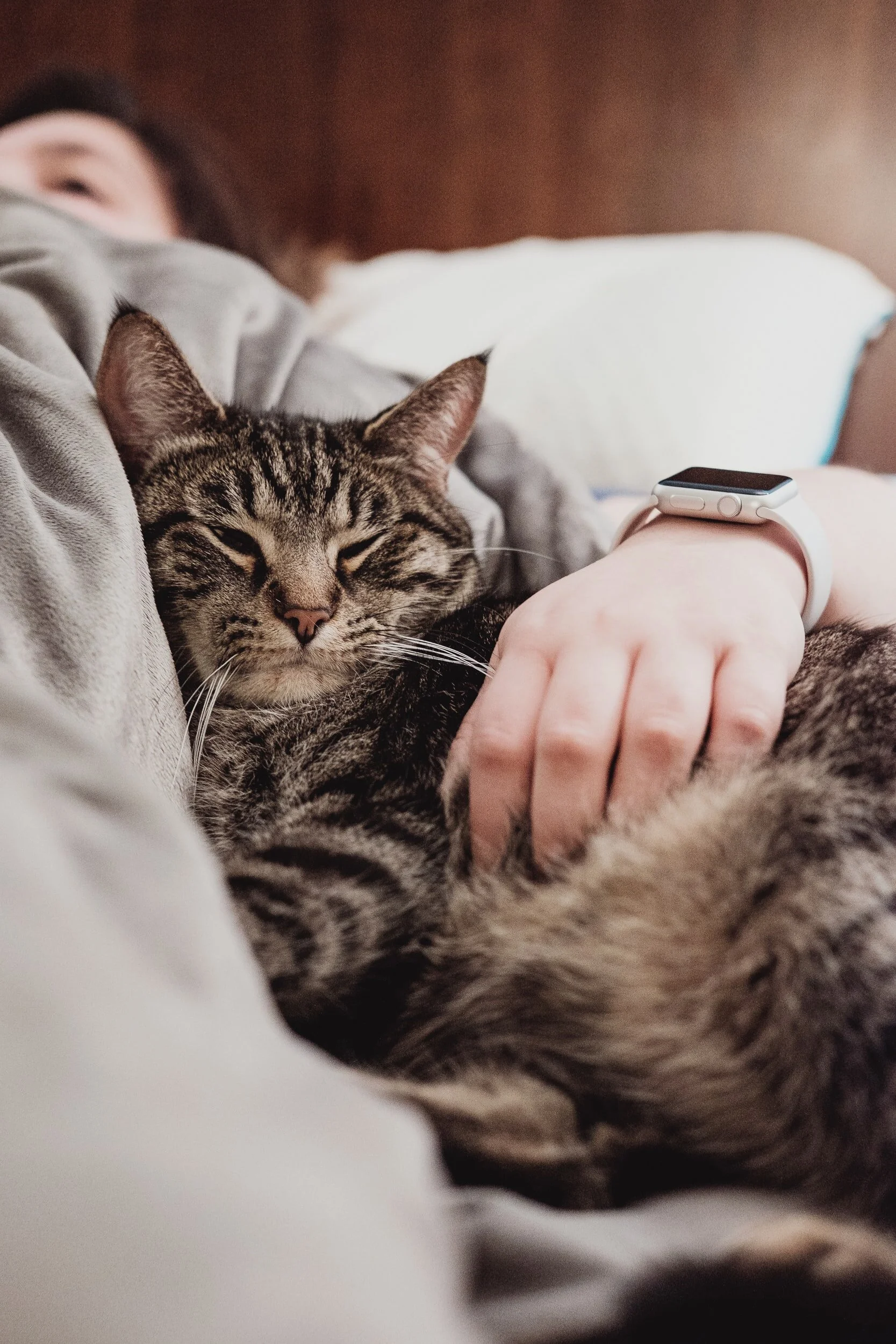Keeping your cat indoors can have its benefits. Indoor cats are at lower risk of injuries related to the outdoor environment such as car accidents, animal fights and predator attacks. They are also at lower risk of contracting infectious diseases or parasites. Statistics have shown that indoor cats generally live longer, healthier lives than outdoor cats. Keeping cats indoors also has the added benefit of protecting the natural wildlife.
To keep your indoor cat happy and stimulated you need to provide for their environment and behavioural needs.
Providing an enriching environment for indoor cats
Cat tower or vertical spaces - Cats love vertical space as it provides them with a secure vantage point to survey the world below. Vertical space also allows cats to be away from other pets or individuals if they choose. Cats also love to climb, so save your curtains and offer your cat a range of vertical spaces to climb, play or rest. You can hide treats and place toys on their raised space for your pet to explore and discover.
Scratching posts and mats - Cats need to scratch. They do this instinctively to keep their nails in good condition. Provide a variety of scratching posts and mats with different surfaces to help prevent your cat from scratching your furniture or carpet.
Places to hide - as predators cats like to hide and jump out at prey. Give your cat places to hide by providing a cardboard box, throwing a towel over your coffee table or buying a play tunnel. Dangle a toy at the entrance of their favourite hiding place and watch them pounce!
Warmth & window views – cats crave warmth and will seek out warm places such as a sunny window or near a heater. They also like to watch what’s going on outside, so position scratching posts, towers or places to rest such as a box with a blanket inside in front of windows or in warm places so they can watch the action outside and keep warm and cozy too.
Security – keep your cat safe and secure by checking doors are locked and flyscreens are in place to prevent your cat from escaping. Outdoor secure cat runs can be a great option to give your cat a view of the outside world.
Fulfilling your indoor cat’s natural behavioural needs
Hunting – cats are one of the best developed species when it comes to hunting. Cats can hear and see better than humans and have skills and instincts that help them catch their prey. There are a variety of ways to fulfill your cats natural hunting skills. Offer food puzzles, interactive toys and food balls to allow your cat to hunt for their food. You can also satisfy this skill through play. Wand toys are always a big hit. Attach some feathers or a play fur mouse to the end of a rod and start playing!
Chasing – as part of their hunting instincts, cats love to chase. Pull a piece of string along the floor as if it’s alive. Your cat will love chasing after it. Just make sure you put the string away after playtime. Laser or torch play is another great opportunity for your cat to use this skill. Just make sure play ends with your cat being able to catch his prey (some sort of toy), otherwise they will be left frustrated. Bubbles can also be fun to pop and chase and are a great toy for both visual stimulation and getting your cat active.
Socialisation & love – love, attention and social activities with humans can be one of the most effective ways to enrich your indoor cat’s environment. Try to take some time out each day to play with, cuddle or pet your cat. Vary it up and try to find a range of toys and activities that engage your cat’s interest. Most importantly, have fun together!
Privacy – eating, sleeping and toileting are private actions and cats can easily become stressed when they have to do so with others around. Make sure your cat has private and quite places for these activities. If you have more than one pet, you need to make sure they each have their own private space for these areas.
Noise sensitivities – your cats hearing is extremely sensitive and they can hear higher pitched sounds than humans or most dogs. The noise of other cats, animals or strange people can easily startle a cat. It’s important to be aware of this and use a low soothing voice when talking to your cat. If noisy visitors bother your cat, you may want to take them to a quiet room where they can relax during the visit.
There are plenty of ways to provide an enriching indoor environment for your cat to keep them happy and stimulated. Most importantly, enjoy spending time together and have fun!





